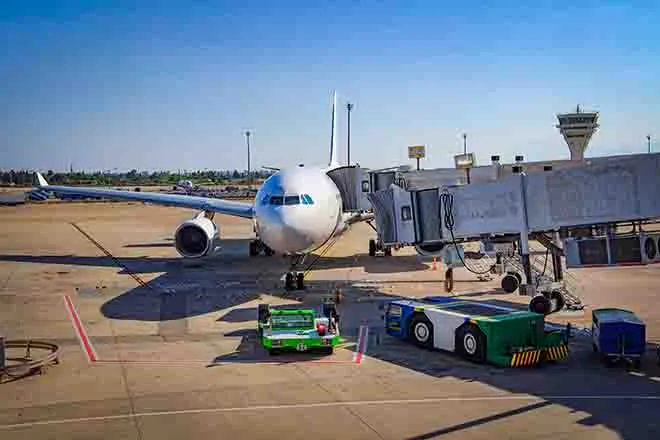
Daily Audio Newscast Afternoon Update - October 20, 2025
© INDU BACHKHETI - iStock-1336427297
News from around the nation.
Shutdown threatens food assistance for 1 in 4 Nebraska children; Tracking the fragile reality of Alaska's food supply and MI school bike program lowers absenteeism.
Transcript
The Public News Service Monday afternoon update.
I'm Joe Ulrey.
The Supreme Court will decide whether people who regularly use marijuana can legally own guns.
The Associated Press reports the case stems from a Texas man charged after admitting he used pot and kept a gun at home.
A lower court threw out the charge ruling the federal ban on drug users owning guns unconstitutional.
The Justice Department, under President Trump's administration, appealed that decision.
Government lawyers argue the ban protects public safety.
The case tests how far the court's 2022 gun rights ruling reaches, especially as marijuana remains illegal under federal law despite widespread state legalization.
A new report from the Food and Environmental Advocacy Group shows that at least one in four Nebraska kids under the age of five and their families are at risk of losing critical nutrition assistance amid the government shutdown in Washington.
The program will lose funding at the end of the month.
Food and Water Watch Policy and Litigation Manager Mitch Jones says the Women, Infants and Children program will run out of money at the end of the month if government services remain unfunded amid the shutdown, having a major impact on rural Nebraska families.
In Nebraska, this is going to mean that approximately one in four children under the age of five, that's almost 30,000 kids in Nebraska, will lose access to the WIC program if and when it runs out of money at the end of the month.
Cuts to Medicaid and SNAP benefits earlier this year are making the a threat even more dire for children and low-income families, especially in rural Nebraska.
WIC funding will expire October 31st if Washington lawmakers don't reach a budget deal.
I'm Mark Moran.
Alaskans get most of their food from outside the state through a complex system filled with logistical and natural challenges.
Though most food arrives by sea, the fastest route is the Alaska Highway, a stretch of of nearly 1,400 miles through Canada.
Earlier this year, after President Donald Trump announced tariffs on Canada, Canada threatened to slap tolls on trucks using the road.
So far, that hasn't happened, but Food and Environment Network reporter Ava Holland says it confirms that Alaska's food supply is fragile.
People just assume there's a stockpile, right?
There's no stockpile.
There's no, there's the food comes off the ship and goes straight to the shelf in Alaska, which is different from the lower 48 or even Hawaii, which have a warehousing sort of middleman component.
Holland says while Hawaii usually has a two week supply of food on hand, Alaska has only three to seven days.
She says the delay of even one ship from Seattle can have serious impacts.
This is Public News Service.
As ratepayers across Maryland face steeper electrical bills, consumer advocates are offering advice lower your energy costs.
More from Zimone Perez.
A new guide from the Maryland Energy Advocates Coalition outlined six steps to combat rapidly increasing prices.
The first step is to get to know your utility bill.
From there, the guide recommends that homeowners take advantage of a free energy checkup and HVAC tune-up offered through Maryland's Empower Energy Efficiency program.
Laurel Peltier, the chair of the coalition, wrote the guide.
She says consumers have started feeling the crunch with their energy bills.
Energy was cheap for a long time, and so we didn't really care.
You know, it's like you kind of got your utility bill and it was like, you know, this is affordable.
And for low income families, they were struggling before.
Now they're underwater.
Energy costs have jumped across the country almost twice as fast as the overall cost of living.
A Detroit high school that offers special instruction on flying or fixing airplanes and drones has reversed high absenteeism rates linked to transportation barriers.
When searching for solutions, Principal Michelle Davis remembered how she felt as a child when her mother purchased a huffy bike and she wanted her students to have the same excitement.
A phone call to the school's advisory council and a partnership with the Mitch Album Foundation, Davis explains, set the plan in motion to surprise almost 100 kids with their own bikes.
It was like Christmas.
They were screaming and yelling, clapping.
Some of the kids had never had bikes before.
Chronic absenteeism rates have dropped by 14 percent Davis adds and a culture shift has taken place since the program's start.
Students feel empowered because they have transportation at their fingertips and some mobility issues are removed when parents work schedules and students extracurricular activity times are not compatible.
I'm Terry Dee reporting.
A developer is slated to build a massive AI data center in New Mexico after only a few weeks notice to local residents and opponents say it's created distrust about the process.
Developers behind the 165 billion dollar project Jupiter have pledged to create 2,500 construction jobs and 750 full-time positions.
That may be good news for the economy but critics worry the project could strain the region's water and power resources and cause significant pollution.
Joe Cardeo is with the advocacy group Progress Now New Mexico.
Private companies are not coming into local communities because they want to do good.
They're coming to make money and three weeks is certainly not enough time for the community to have a real transparent conversation about the costs and benefits.
Cardeo says a lack of transparency has led many to conclude it was a done deal before the public hearing was ever held.
I'm Roz Brown.
This is Joe Ulori for Public News Service, member and listener supported.
Find our trust indicators at publicnewsservice.org.
















